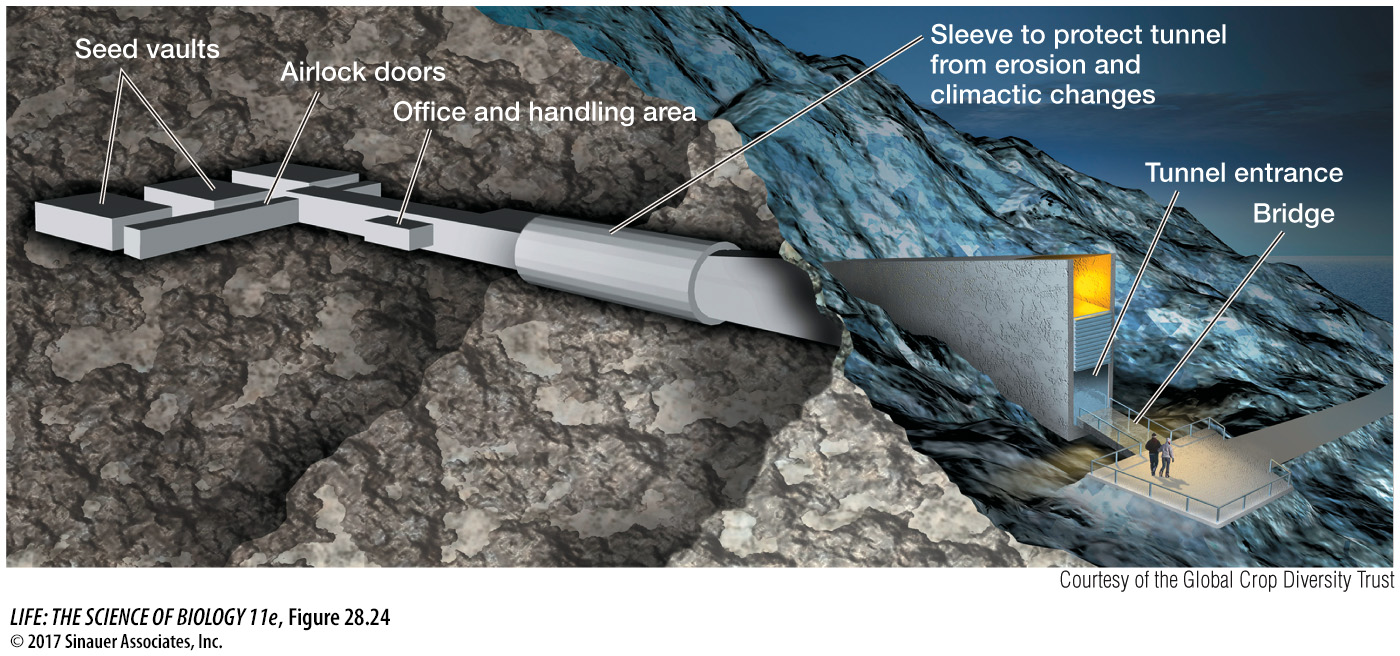Investigating Life
investigating life
How long can most seeds survive, and why is seed dormancy important?
As you saw in Investigating Life: William Beal’s Seed Viability Study and in the opening of this chapter, seeds of some plants can remain dormant but viable for decades, centuries, or in extreme cases, even millennia. Seed dormancy is especially important for the long-
Future directions
We’ve noted that humans depend on a relatively small number of plants for the majority of our food needs, although many more species of plants are grown and eaten for food. Traditionally, different locally adapted strains of crop plants have been grown by different farmers in different regions of the world. Agricultural companies now produce new varieties of crops that increase agricultural production. Unfortunately, a downside to these new strains is that farmers across the world have switched to growing relatively few varieties of important crop plants, which increases our global risk to disease and pests. If all farmers grow the same strain of wheat, for example, and that strain is susceptible to a particular pathogen or insect pest, what happens when the pathogen or pest spreads and all the susceptible wheat is lost?
To guard against devastating losses of important plants, many nations around the world have collaborated to develop a secure seed vault, which stores and protects the genetic diversity of crop plants (Figure 28.24). This seed vault is built into a sandstone mountain, surrounded by permafrost on the Arctic island of Spitsbergan, Norway. It is situated at a high enough elevation that it will remain above sea level even if all the polar ice caps were melted by global warming. Cooling systems maintain the vault at –18°C, and even if these systems fail, insulation and local cold weather would protect the seeds inside and maximize their viability. This seed vault complements several shorter-
